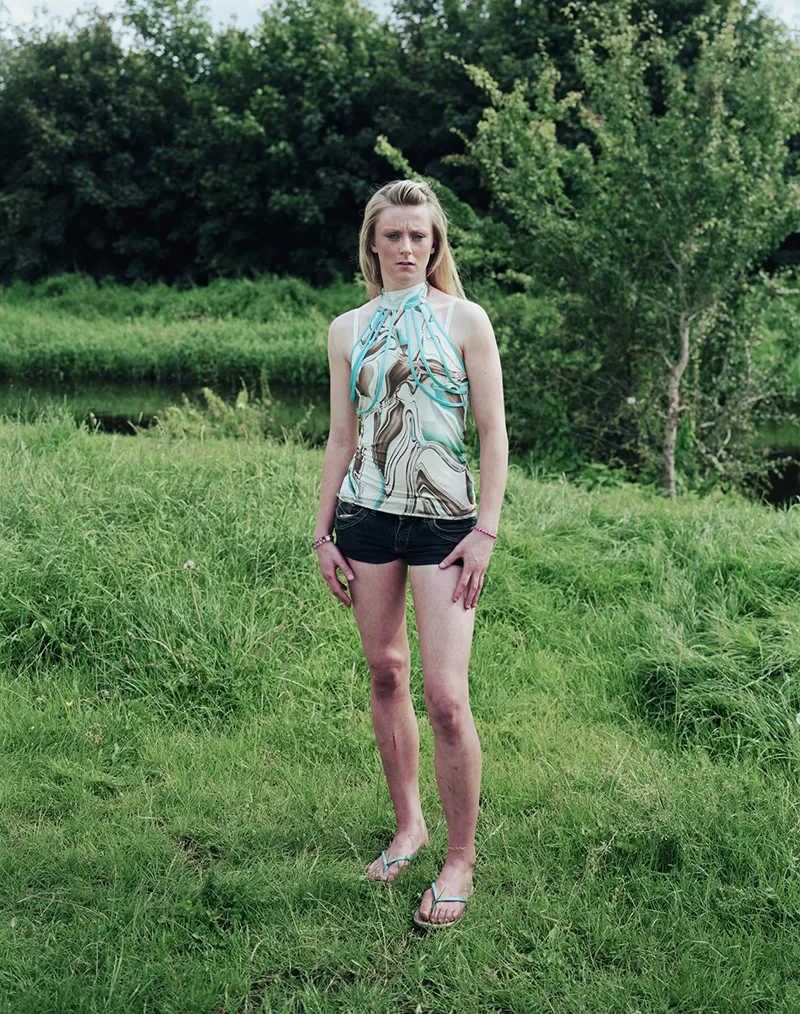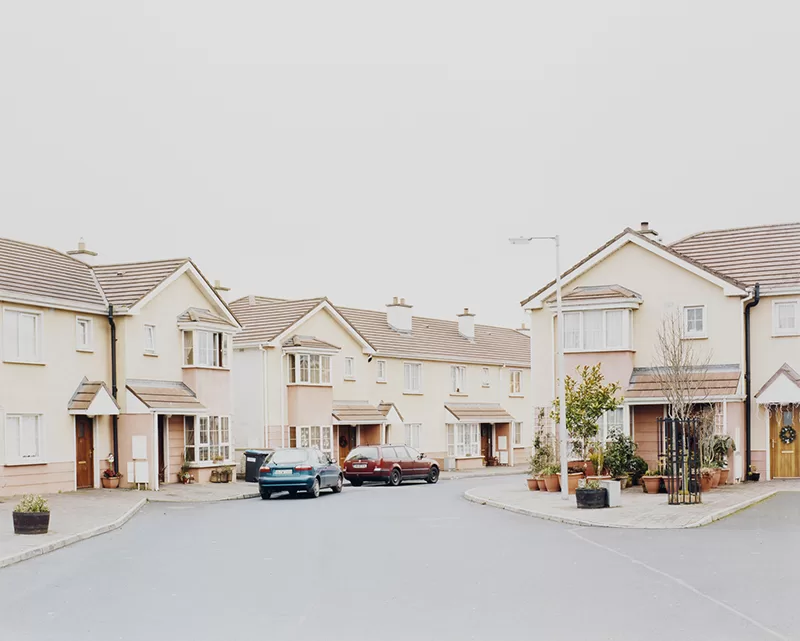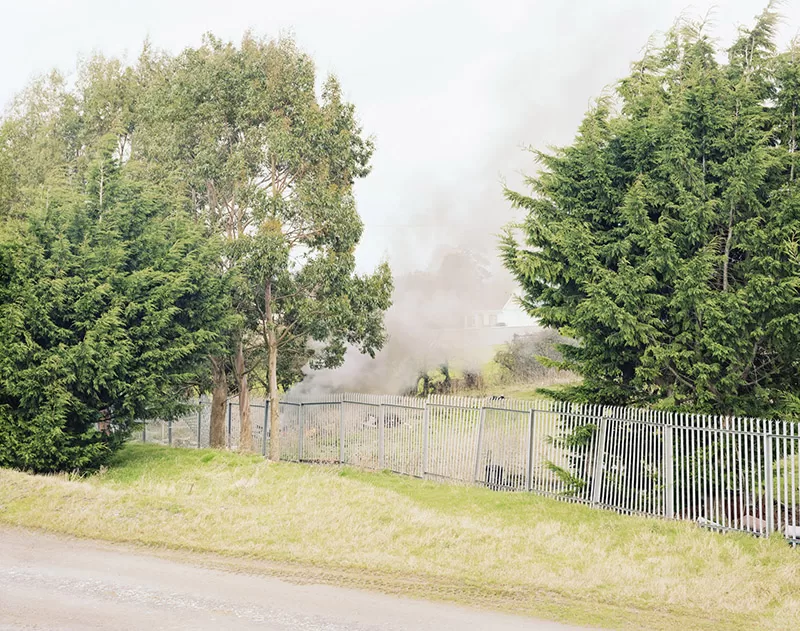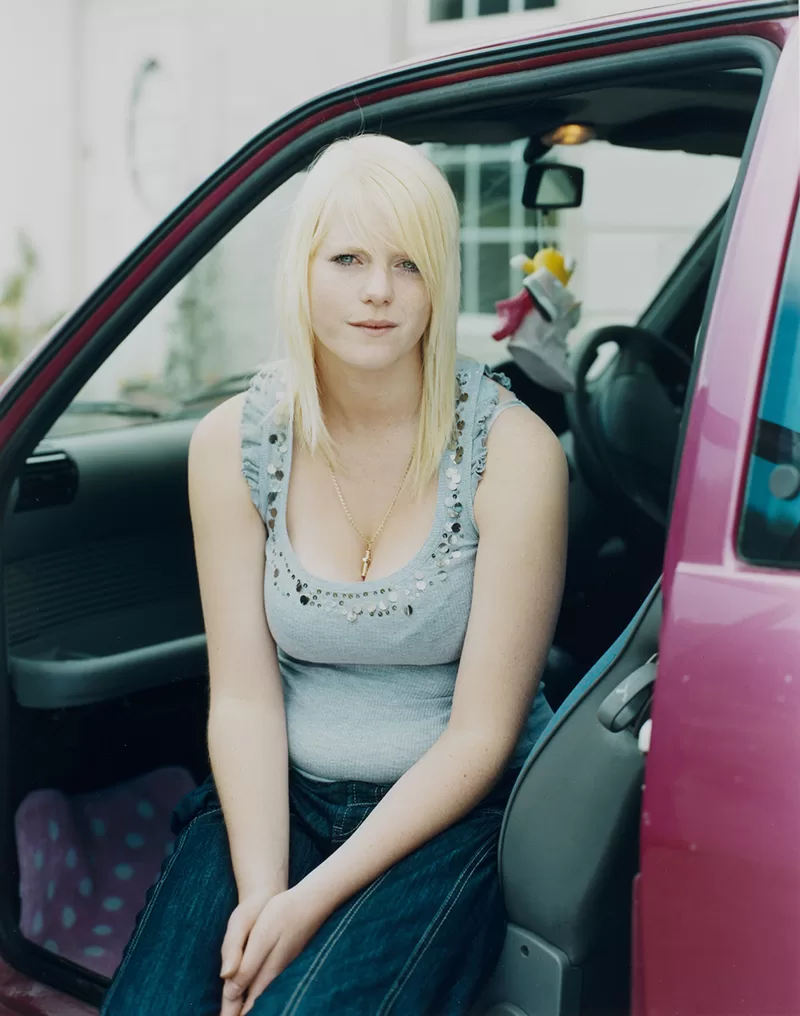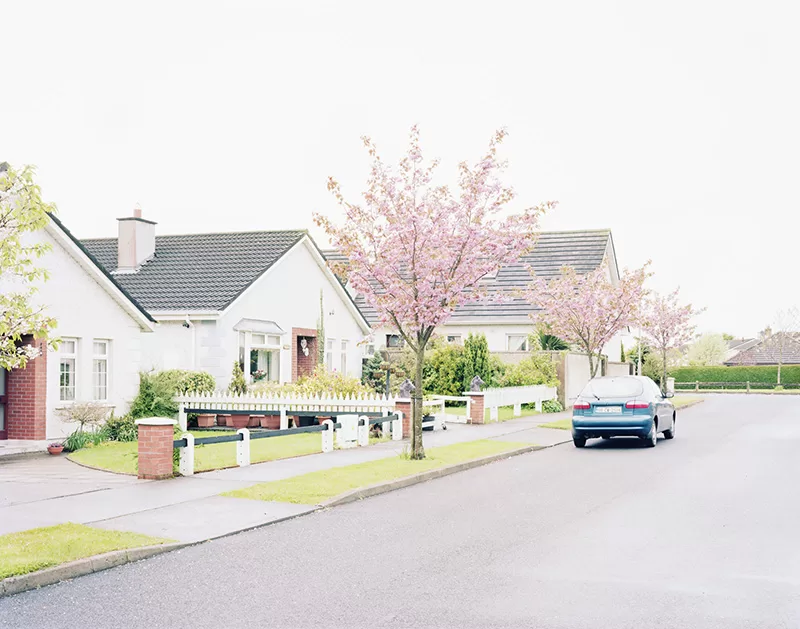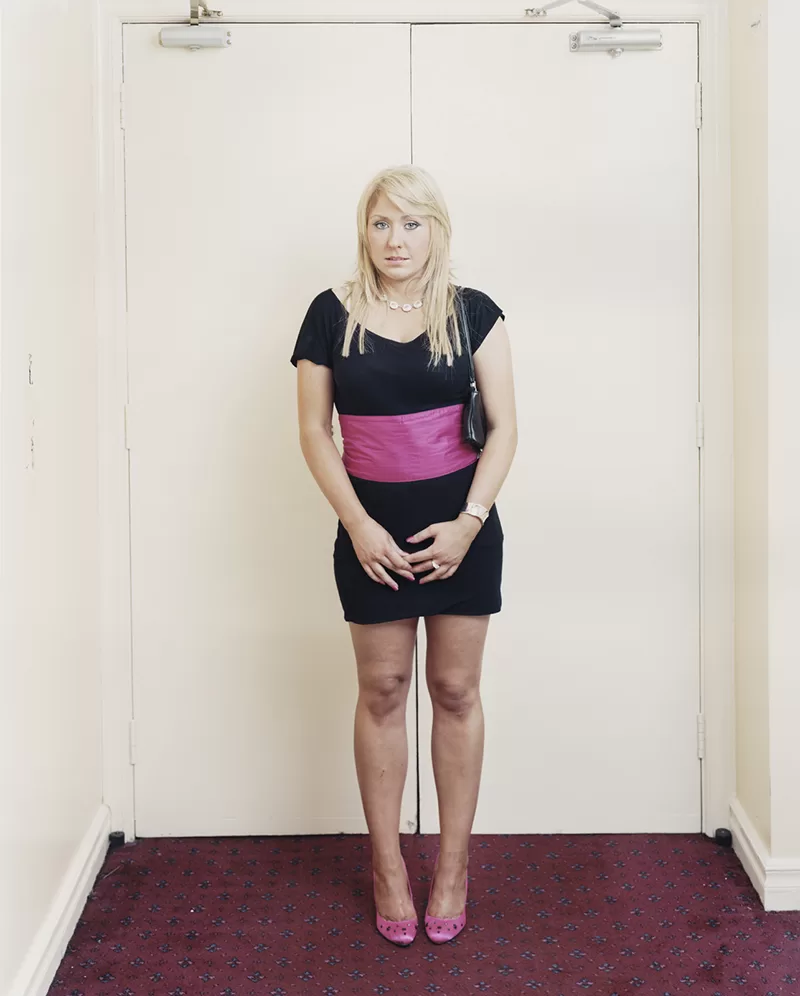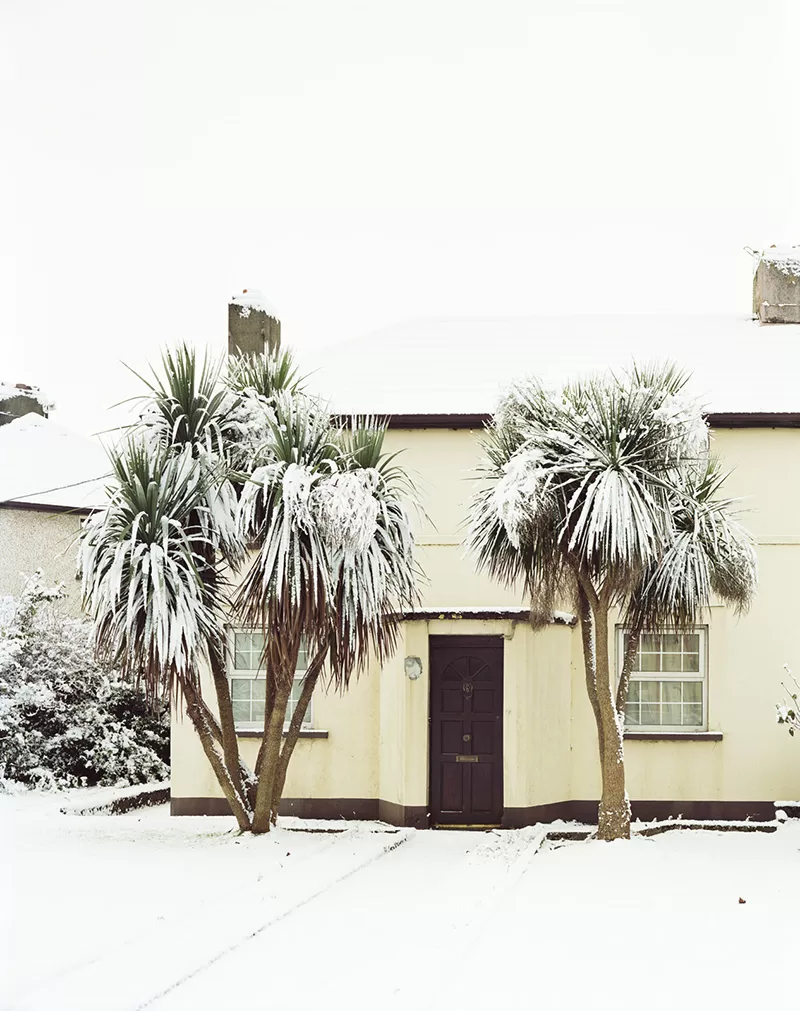Enda Bowe – At Mirrored River

There are places that don’t even seem to linger in the memory of someone passing through them, much less provide the sort of spark that would ignite the imagination, and yet these are the very places where most of us happen to actually live. Similarly, Enda Bowe doesn’t even identify the small Irish town that is the subject of his series At Mirrored River, but in a way he doesn’t really have to; it’s the kind of nowhere that could indeed be anywhere. At the same time, Bowe’s pictures grow from the recognition that this place, as the accumulation of everyday moments and individual lives, has its own importance, and a tangible reality that might not be so accessible in places of more apparent substance, where the weight of a grandiose history tends to obscure the vicissitudes of the present. Because this place actually does have a history of its own, albeit on a somewhat different scale, that Bowe is obviously and acutely sensitive to, a history measured in the relationships between people, the sum of their days and lives, the places they call home – whatever that might be.
The most immediately striking aspect of the work, however, is its particular tonality, which tends toward a flat, desaturated palette, aided by Bowe’s propensity for photographing in overcast or even inclement conditions, such as snow. Aside from this, the visual quality of the pictures, their understated, but nonetheless palpable sense of colour being drained from the world, is an essential part of the work’s effect. It is also notably ambiguous, capable of suggesting a kind of loss or diminution, showing where something has been stripped away, but equally it could be evocative of the quiet understanding we associate with domesticity and the idea of home, a landscape known in all its particulars – the glow of memory. In an explicitly Irish context, historically a nation of emigrants, this idea of home is a very loaded one, precisely because it carries the inevitability of separation, the necessity for which returned forcefully in the wake of economic turmoil over the last decade, felt disproportionally in just the kind of small town that is Bowe’s subject here. In that sense it is no accident his portraits are all of young people, facing, as we can’t help but assume, an uncertain future – and in these sympathetic portraits their own sense of uncertainty about themselves is only too plain.
So while this is, on the surface at least, resolutely not a political work, seeming to operate most clearly in a poetic, observational mode, the immediate historical context is still that of the enduring post-Celtic Tiger economic crisis, our knowledge of which darkens the already sombre mood of these pictures even further. That crisis is not signalled in any obvious way, but it is there as an atmosphere, the looming sense of displacement and incipient (if not yet actual) catastrophe; smoke from an unseen fire drifts through a cluster of trees, the hulk of a boat lies stranded on a weir. These are lucid, undramatic pictures, but they sometimes have the clarity of a bad dream, of the moment we realise that every structure and institution we take for granted, assuming we even think about them at all, is utterly fragile. In that sense, economic crisis is not safely compartmentalised in its own realm, but touches every aspect of our lives; it is, emphatically and inevitably, a social crisis as well. Bowe’s pictures are not just a study of a particular time, even chronologically they have more scope than that, but knowing roughly when – if not where – they were made adds another layer to our appreciation of the mood he evokes.
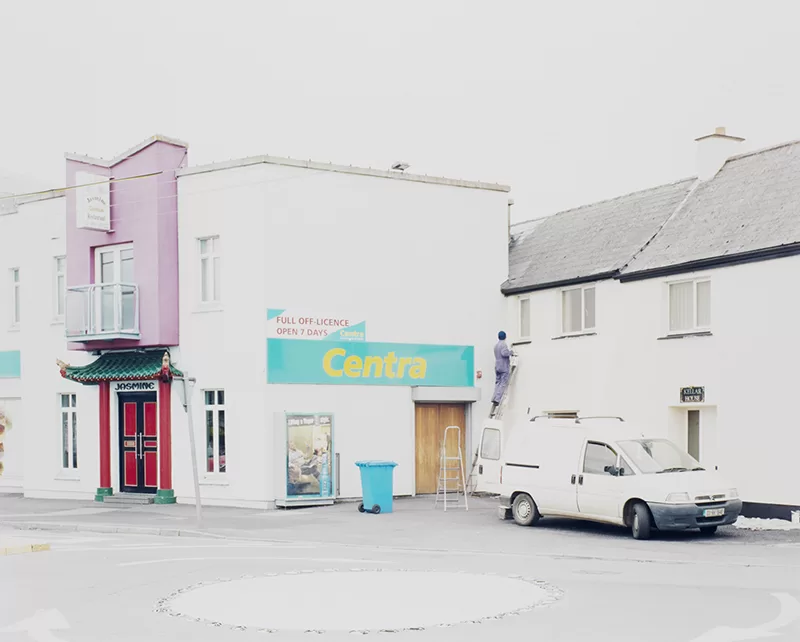
The title of the work also gives us a bit more insight into what that mood might be. If a mirror is something that we expect to give us back a reflection of ourselves, we also tend to assume its stability at least in the moment we’re looking at it; a river is, by contrast, almost proverbially an entity of change, it is never the same. Trying to reconcile these opposing experiences (and expectations) is the fundamental dynamic of contemporary life. Perhaps the restless surface of the river is the changeable reflection of uncertain selves in troubled times, because ‘crisis’ is no longer an exception to the functioning of society, but its dominant mode, which necessarily effects how people see themselves and how they relate to the world around them. If Bowe is undoubtedly making a portrait of a specific place, then it is still subject to the conditions that prevail in the wider context to which that place belongs, even when they are also shown to be operating in a specifically local vein. In fact, their ‘locality’ is what matters here, picking up on the often overlooked textures of the everyday as being increasingly the manifestation of globalised forces, which paradoxically tend to erase what has been historically local, while also creating localised conditions of disturbance in their wake; in that sense, everywhere is local – and nowhere is.
However, this shouldn’t be taken to mean that Bowe’s pictures in any way resist or reverse the pressures that have come to define contemporary Irish society; such a reforming agenda is ultimately beside the point. For that matter, saying these pictures are basically ‘observational’ in nature is by no means to slight them, because it precisely how sensitive they are to the immediate condition of his subjects – landscapes and people both – that makes the work so effective. What it traces are fault-lines, the imperfect joining of past and present, visible especially in the kind of places that he is repeatedly drawn to, places that have little to recommend them in the way of obvious visual or photographic drama, but that are telling nonetheless. The styles of older, traditionally working class houses brush up again new, often unfinished suburban developments, while the land that surrounds such developments lies fallow, its purpose either undefined or abandoned; growth gone to seed. He presents these overlapping sites as, if not beautiful exactly, then at least redeemed of their marginality by the implicit understanding of how they are still connected to a lived and living history.
So there is something fundamentally important in the kind of attention Bowe that pays to these ‘everyday’ places and ‘ordinary’ people, which doesn’t mythologise, but is still not purely descriptive either. As noted, the portraits are mostly of younger people and the way they present themselves to the camera suggests a pervasive uncertainty about the future; they are clearly on the cusp of something as yet unknown, but we know, and surely Bowe knows as well, that their futures have largely been circumscribed by forces beyond anyone’s individual control. It is a combination of hopefulness and uncertainty that makes the portraits in this series so affecting. They too serve as a kind of mirror; in the faces and imagined futures of these young people we can see a glimpse of our own collective uncertainties, marking the foreclosure of possibility in the context of a social and historical moment defined by nothing so much as its on-going crises. But it is in looking so closely at places and people that are touched by this history, rather than the people or events that seem actively to shape it that Bowe is able to see those forces most clearly. This unnamed, but by no means unfamiliar place is a microcosm of the times.

